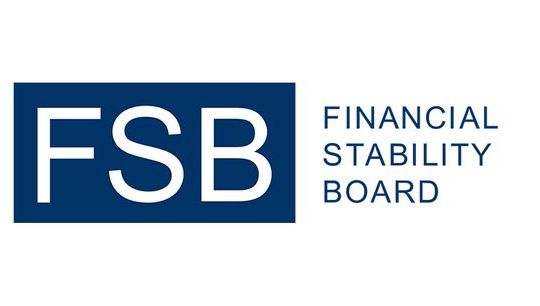Financing the economy 2015: The role of alternative asset managers in the non-bank lending environment
By AIMA
Published: 06 May 2015
The following is an online summary of this particular AIMA paper
Foreword from the AIMA Alternative Credit Council
I am delighted to introduce on behalf of the AIMA Alternative Credit Council (ACC) our new paper, “Financing the Economy.” This research comes at a very important time – as alternative credit funds and the use of non-bank finance becomes increasingly prominent across all aspects of lending.
Non-bank finance is very much part of the mainstream in the US and funds that provide direct lending tend to operate largely in the US. Outside of the US, bank deleveraging in Europe is creating an opportunity for institutional and private investors to expand direct lending to a range of sectors, and there are plenty of new approaches and structures emerging.
Increased activity from capital markets as opposed to lending through traditional bank lending channels has produced material benefits. Included among these are increased market liquidity, a greater diversity of funding sources and a more efficient allocation of risk among investors.
Non-bank lending can greatly mitigate the systemic risk associated with direct lending by banks. Levels of leverage used by funds in their portfolios are close to negligible. Alternative credit funds, typically, are investing on behalf of sophisticated investors who understand and can absorb potential losses. Unlike bank depositors, these investors cannot instantly withdraw their capital, given funds tend to be closed-end in nature. Finally, alternative funds are often specialists in dealing with stressed and distressed assets so complexity is something they are prepared for. Rather than selling assets and collateral in a panic, they are capable of expertly managing default situations.
Amidst historically low interest rates, a dearth of true yield opportunities from investing in fixed income is hampering the ability of pension funds to deliver on their basic objectives. Consequently in recent years, the appetite of institutional investors for private debt exposure has developed aggressively, as the risk-adjusted returns on offer make this one of the most attractive investment strategies of recent years.
Governments acknowledge the need to develop a more diversified lending market in Europe and the role of non-bank lenders in doing this. In its recent Green paper on Europe’s long term financing situation (1) , the EC argues that the reverberations of the financial crisis provides an important opportunity to diversify Europe’s credit markets. Further it confirmed that, in order to truly revive the economy, it will be necessary to improve the blend and overall resilience of different funding sources.
Removing structural barriers to entry in the lending market will increase diversity of supply of credit, boost the resilience of the financial system and drive better outcomes for consumers and businesses.
AIMA’s Alternative Credit Council was established in late 2014 to provide general direction to AIMA’s executive on developments and trends in the alternative credit market. We hope that our combined work will help ensure a sustainable future for this essential sector. Our collaboration starts with this research, which is now the third paper in a series of work that explores the thesis that facilitating greater capital markets, and by association, hedge funds enhances economic growth for the long term. The research is ultimately for the benefit of both policy-makers and market participants, and continues AIMA’s commitment to improving the industry for practitioners and investors alike.

Stuart Fiertz |
Introduction
The source of funding for the real economy matters. Capital market financing contributes more to economic growth than bank lending by creating opportunities and an economic environment that fosters better economic management and investment in risky but often innovative projects. AIMA’s own research (2) has shown that growing combined stock and bond markets by one-third could fuel a long-term real growth rate in per capita GDP of approximately 20%, as stock and bond market liquidity allows for cost-efficient re-allocation of capital across industries. We’ve decided to go further and look at various components of the capital markets. We examined the role of activist funds in the equity space and have now turned our gaze to the debt markets.
Private debt strategies have grown dramatically in popularity in recent years buoyed by both increased investment from investors into these funds as well as increased demand from smaller businesses for alternative sources of funding. (3)
Across Europe’s lending landscape, a quiet revolution is taking place in the way companies secure their finance. Amidst tighter banking restrictions and subsequent overall reduced levels of bank lending, the past two years has seen a significant rise in alternative asset managers jumping in to bridge the financing gap via non-bank lending. These alternative lenders consist of a wide range of non-bank institutions with different strategies including private debt, mezzanine finance and distressed debt. Hedge funds have also increased their exposure to this sector through a variety of investment strategies that can be termed “alternative credit”, which include but are not limited to direct lending, private debt, securitisation and capital relief.
As of the end of 2014, figures for Europe reveal over 350 transactions have been completed by 36 alternative lenders in just over 2 years. (4) Deal flow has continued to grow, as the volume of deals done by direct lending funds in Europe increased 43% between 2013 and 2014. It is estimated that there are now around 40 active direct lending funds (up from 18 reported in 2012) and a further 81 new funds out in the market looking to raise £50bn. Increasingly, banks are also teaming up with alternative lenders to provide more flexible structures and there remains a strong role for them in the new lending environment.
Indeed, some of Europe’s largest institutional investors are helping to bridge the financing gap for the SME (5) (Small and Medium Enterprise) sector by investing in alternative credit funds or taking a more direct approach and doing it for themselves. Direct lenders enjoy a growing credit portfolio across a wide range of businesses as well as providing support to a broad variety of infrastructure projects.
Arguably, the role of non-bank finance is never more important than today. A recent survey (6) by the European Central Bank showed that mid-market corporates continue to report a reduced supply of bank loans for the fifth consecutive year, while access to direct bank finance for SMEs is increasingly difficult. In contrast, the AUM of US loan funds has tripled since June 2012 while growth has been even faster in the EU with AUM rising fivefold over the same period (albeit from a lower base).
Private debt financing today accounts for approximately 6% of the total estimated funding for SMEs. Given bank lending to SMEs is likely to continue to decline, funding from the private debt industry as an overall percentage of total SME funding in the European Union could reach levels of between 15% − 20% within the next five years.*
Alternative credit hedge funds, and the wider hedge fund industry, are part of the wider asset management sector, not the banking industry and as such should not be included in any part of the shadow banking discussion. Hedge funds must be authorised and are the subject of strict regulation across all major financial jurisdictions. Further, they are subject to significant micro-prudential operational standards and organisational requirements such as conflict of interest and conduct rules, the protection of client assets as well as prudential regulations on liquidity and risk management.
In this latest research piece, we explore the development of private debt investment and the increasingly important role asset managers are playing as participants in non-bank finance. To help us in our understanding of this area, we conducted a global survey among a variety of alternative credit participants throughout late 2014. (7) The objective of the survey was to gather information about the funds and managers who participate globally in private debt and to contribute to the debate around asset management involvement.
Special thanks are due to AIMA’s Alternative Credit Council for its support in the production of this paper. We hope that this publication will help to improve understanding of the private debt sector and be considered a trusted source for you to learn more about this increasingly influential area of capital market development.

Jack Inglis |
Demographics of survey participants/methodology
Asset management firms that participated in this survey account for assets under management (AUM) of approximately $530bn (using the midpoint of the provided
AUM response ranges). (8) Using the same methodology, these managers allocate approximately $85bn to private debt investment strategies. The majority of participating firms in the survey are located in the UK or North America, which are considered to be the two most developed regions for private debt investment (figure 1). The full spectrum of asset management firms are represented including traditional asset managers, private equity firms and hedge funds (figure 2). Just under half of the respondents are hedge funds or fund of hedge funds investing predominantly in fixed income and credit (figure 3). While firms of all sizes are represented in this survey, the average respondent (credit lender) is a medium to large asset manager holding a significant investment in private debt. Over 55% of the responses are large asset management firms (with $5bn or greater in AUM − figure 4) while 50% allocate $1bn or more in AUM to alternative credit strategies (figure 5). Smaller firms (with $500m or less in AUM) are also well represented in this survey.
Key findings from the survey
1. Asset managers are playing an increasingly crucial role in financing the real economy
The global financial crisis and subsequent bank reform has led to a diminution of capital and reduced lending opportunities available to the private sector. Arguably nowhere has this dearth of lending been more challenging than in the European lending market. In stark contrast to the US lending market where 80% of all corporate lending is carried out in the capital markets (through the issue of equity or bonds), almost the same percentage of the total of European lending is bank financed. (9)
Among the borrowers that are particularly feeling the brunt of forced bank retrenchment are the small and medium sized enterprises (SMEs) that have traditionally relied on banks for investment. While many firms have started to issue bonds (high yield, investment grade) as a way of raising finance, this alternative only applies for larger companies as capital markets do not have the appetite for buying into bonds where the size of the firm is comparable to an SME.
Amidst these restrictions, the alternative lending market continues to grow, and direct lending (non-bank finance) is fast becoming a permanent feature of the lending market. These alternative lenders consist of a wide range of non-bank institutions with different strategies including private debt, mezzanine finance and
distressed debt.
Hedge funds have increased their exposure to this sector through a variety of investment strategies that can be termed “alternative credit”, which include but are not limited to direct lending, private debt, securitisation and capital relief.
Adding support to this opinion, over 80% of the managers in this survey are lending to SMEs and their equivalent or larger corporates (figure 6). (10) The ECB estimates that SMEs account for 99.8% of all businesses and for 66% of all employment in the EU, while in the U.S an estimated 200,000 SMEs employ 65% of the work force. (11) Over 50% of managers surveyed are investing in distressed debt and providing finance to struggling companies that would otherwise likely fail.
95% of the managers surveyed provide financing for acquisition/expansion or refinancing purposes while 77% provide financing for both purposes (figure 7). Purposes of financing relevant to borrowers such as access to bridge financing (short-term cash for the maintenance of operations) or as a means to improve their working capital (acquire inventory or pay off accounts payable) also rate very highly among their reasons for seeking capital in the absence of bank support.
M&A activity is expected to deliver an even higher volume of transactions in the coming years, as firms look to invest large volumes of dry powder, which will further fuel demand for un-constrained and bespoke debt which favours alternative lenders.
The managers polled are active in providing finance across a variety of industry sectors. One of the more popular industries that managers lend to is the consumer goods and services industry (figure 8). This particular industry is vital to the performance of an economy as consumption is typically responsible for more than 50% of a country’s GDP. In the UK, for example, household consumption expenditure accounted for 65% of GDP in 2013. (12) Traditionally these industries have relied on borrowing from the banking sector. But, as banks have moved out of lending to this area, it is notable that direct lending has become a prominent borrowing alternative, and is fast becoming a permanent feature of the lending market. The target transaction size by managers participating in the survey is typically below $100m with the range of preferred investments between $25m-$100m (figure 9). These transaction sizes are indicative of companies that are considered too small for the public corporate bond market as most new issuances tend to be in excess of £100m. Managers are generally providing finance to borrowers (who have an EBITDA) of $25m or less. This is highlighted by 50% of the responses in figure 10 below, adding further support to the opinion that asset managers are financing companies that are too small for public bond financing.
Financing terms are being extended to companies in multiple regions although a bias exists with the UK, USA and Western Europe the most popular regions, likely supported by a favourable climate for direct lending. 76% of respondents provide financing to UK-based companies (figure 11). It has been suggested that European mid-sized businesses will need to raise $3.5 trillion in debt over the next five years, (13) while EU banks will need to reduce their asset base by $2.6 trillion. It is thus vital that asset managers continue to extend financing to companies in the key economies of the EU.
Almost 80% of companies financed by asset managers have obtained bank financing either prior to the financing from the asset manager or during the involvement of
the manager (figure 12). Further, companies are seeking to diversify their sources of funding and access the solutions (including the longer terms) that asset managers
are able to provide. While this blend of financing is very much mainstream across the US, the gradual diversification of debt financing is positive for the European economy where bank lending comprises approximately 80% of all external long-term financing. The significance of having a diversified credit market beyond bank financing is that the overall risk in the system diminishes and exogenous bankrelated shocks such as those that occurred in 2008 are better absorbed.
Of the remaining 20% of companies that have been unable or may not have attempted to secure bank finance, it is important to understand that this may not necessarily be due to them having poor credit, but more that the bank in its lending capacity only has so much risk-based capital available to underwrite or hold this type of risk. Loans that are not bank approved, per se, should not necessarily be deemed “loans of last resort.”
An increasingly popular trend in recent years is banks and non-banks’ lending alongside each other. (14) In most cases, commercial banks will retain the primary customer relationship and continue to provide less capital-intensive products and services. Private banks and investment banks could therefore also use non-bank lending partners to meet their customers’ credit needs without using up much needed capital. For banks, this effect would be to move their corporate lending function closer to a debt capital markets model.
Managers are generally not supplying short term capital (i.e. under 1 year), rather the financing loan term is typically 1−6 years in maturity, affording the investment companies stable funding in the mid-term (figure 13).
Almost 35% of the managers surveyed provide financing terms of 4 years or more. This is in contrast to the banking model whose liability structure (deposits) is short term in nature and which as a result are naturally inclined to issue loans (a bank’s assets) with smaller durations. Almost the entire sample of managers currently provide committed term loans to borrowers while half provide revolving term facilities (figure 14). Revolving credit facilities, (which permit a company to drawdown, repay, and re-draw loans advanced to it), the preferred loan type for banks, are more often than not shorter term in nature than a committed term loan.
Private debt funds are embracing their role as financiers of small businesses. More funds have launched in recent years in response to increased demands for funding. For those managers operating a dedicated private debt fund (an overwhelming majority of participants), 48% of those funds have launched within the past two years (figure 15).
Managers engaged in alternative credit typically operate dedicated funds of the same. 80% of managers operate one or more dedicated funds while 52% are operating two or more dedicated funds as their preferred method for investing in alternative credit strategies (figure 16). This implies that asset managers are adopting a focused approach to the alternative credit sector and building up expertise. This preference by managers to have their alternative credit investments operated out of a dedicated fund marks a clear change from previous years where such investments were part of a multi-strategy fund operated by the manager.
The majority of managers also operate managed accounts, which is reflective of the strong institutional investor presence allocating to alternative credit. Institutional investors prefer managed accounts as their preferred investment structure as they offer them better control, can facilitate bespoke fund liquidity conditions, as well as offer greater levels of transparency and customisation.
Of the managers surveyed, there are few “smaller” funds (funds below $250m in AUM) active in this strategy. It is likely that the esoteric nature of the strategy benefits larger funds that have built up the necessary operational capabilities and infrastructure to invest.
Many of these dedicated funds have only launched in recent years perhaps as a consequence of banks having decreased the size of their balance sheets and credit managers’ realisation that there is still plenty of capacity for investment left in this area. Investors also prefer to allocate to managers that have standalone funds dedicated to direct lending. The improving economic environment necessitates that more companies will need financing given the recovery or early expansion stage of the business cycle in most developed economies.
(1) European Commission. “Green Paper: Long Term Financing of the European Economy.” March 2013
(2) Capital Markets and Economic Growth, Long-term trends and policy challenges, AIMA (2014).
(3) We define private debt as investments in or strategies related to loans (whether by funds themselves or bought on the secondary market); private debt
securities (securities privately placed with or issued directly funds or a group of funds, including forms of private securitisations); other instruments with
debt or hybrid debt characteristics used for the financing of companies or projects by asset managers. Further, we consider distressed debt investments,
mezzanine financing, real estate and infrastructure financing as well as other forms of opportunistic and short term lending such as bridge financing to all fall
within the definition of private credit.
(4) Deloitte Alternative Lender Deal Tracker which tracks primarily mid-market deals across Europe with up to €350m of debt.
(5) The category of micro, small and medium-sized enterprises (SMEs) is made up of enterprises which employ fewer than 250 persons and which have an annual
turnover not exceeding €50m and/or an annual balance sheet total not exceeding €43 million.
(6) April 2014, Survey on the access to finance of small and medium sized enterprises in the Euro area, ECB.
(7) We are grateful for the support received from Simmons & Simmons in drafting the questionnaire for this survey.
* Source: AFME's Bridging the Growth Gap Report, Preqin, AIMA private debt survey.
(8) If a manager chooses a response option of between $20bn and $50bn in AUM, it is assumed they have $35bn in AUM.
(9) EIF, “Institutional non-bank lending and the role of Debt Funds”, Working Paper 2014/25
(10) In the EU, the category of SME is defined as enterprises with fewer than 250 persons and an annual turnover not exceeding €50m and/or an annual balance
sheet not exceeding €43m (Article 2, Annex of Recommendation 2003/361 EC)
(11) United States. Census Bureau. Washington: GPO, 2007. Print.
(12) Data taken from the World bank (2013)
(13) The Squeezed Middle, June 2013, S&P








